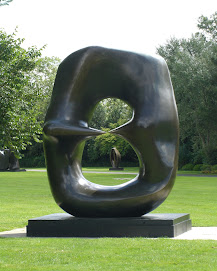On Squares
Your opening statement perplexed me, somewhat. From my perspective of a person, reduced to art appreciation, not creation, the judgmental dichotomy “use – abuse” does not apply to artist's choice. I propose “employ and exploit” as a way to establish semantic equilibrium. (As an aside, the blame for overusing, misusing, and abusing judges should fall - these days - on the Senate.) Yet, accusations of abuse against artists by general public, art critics, and fellow artists abounded through history. Such was the case of
Kazimir Malevich, the founder of the Suprematism, who expressed his aesthetic principle in his manifesto From Cubism to Suprematism. Black Square, 1915, and Suprematist Composition: White on White. 1918, are his emblematic works.
Utilizing abstract geometric forms, he purified art of the residue of things, thus establishing its superiority over objects. If meditation is a space between two thoughts, Malevich's contrived reductionism seeks higher meaning.
The tradition of non-objective art continued in the works by Josef Albers whose “oeuvre reflects an adherence to the deceptively simple principle of visual economy. His paintings commence as objective, mathematically precise constructions, involving straight lines and angles, that form the foundation for his principle concern, the subjective relationship of color and form. His art proves that there is a “world between physical fact and psychic effect.” (“Homage to the Square: Nocturne, 1951.” The James A. Michnener Collection. UT-Austin, 1977. 5.) See The Josef & Anni Albers Foundation site for further information:
Friday, August 7, 2009
By Irina Marchenko
Subscribe to:
Post Comments (Atom)
Jasper Johns: Gray




![Objet Mathematique [Mathematical object], 1934-36](https://blogger.googleusercontent.com/img/b/R29vZ2xl/AVvXsEjLj3RbKwEsBQ9_oXAT8tJF4nqp-uvyD5k1gCCLHBM_b-FZsKFEu5Noon_p_mT_vcKWjWmTGpiLj-nxAv1VZpI_ITC5X-Q51T9wXr-Uzpb3xBtMpY_E_FqpW0ard-_7d4BrcTkb-2ASQUM/s264/00objet_math.gif)

1 comment:
I'd like to recycle an old post about the Russian art from another blog of mine:
http://marchiaru.wordpress.com/2007/09/02/exploring-russian-avant-garde-at-dma/
Be sure to visit the MOMA link from a comment.
Post a Comment